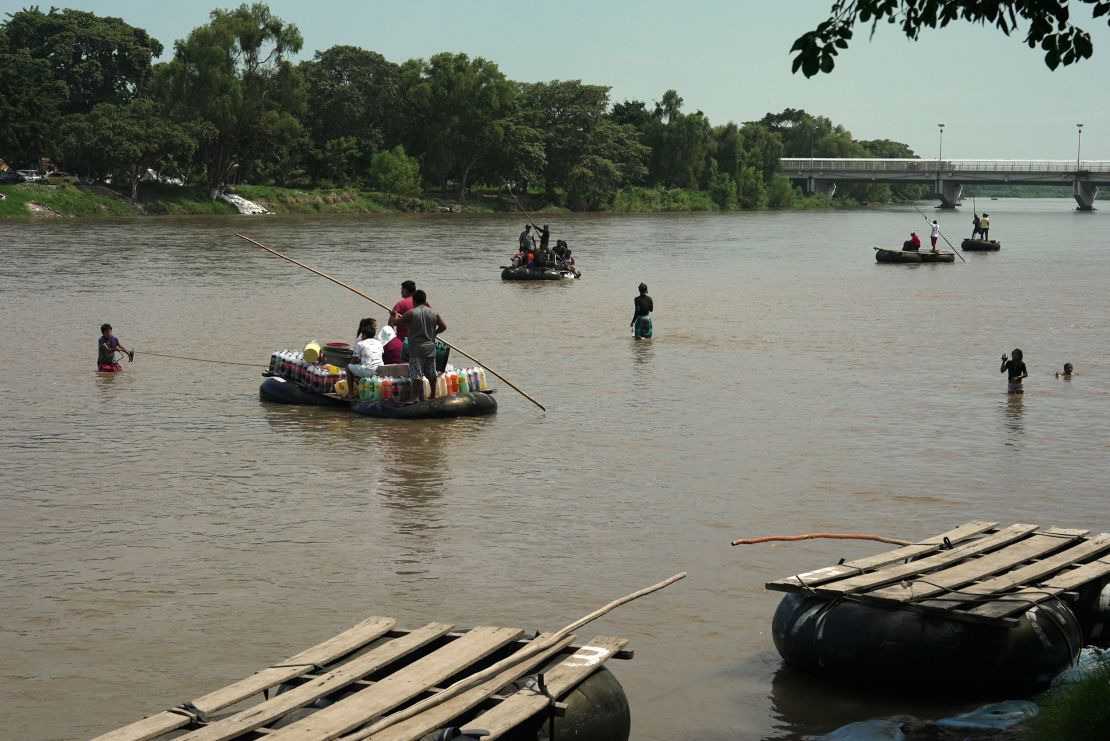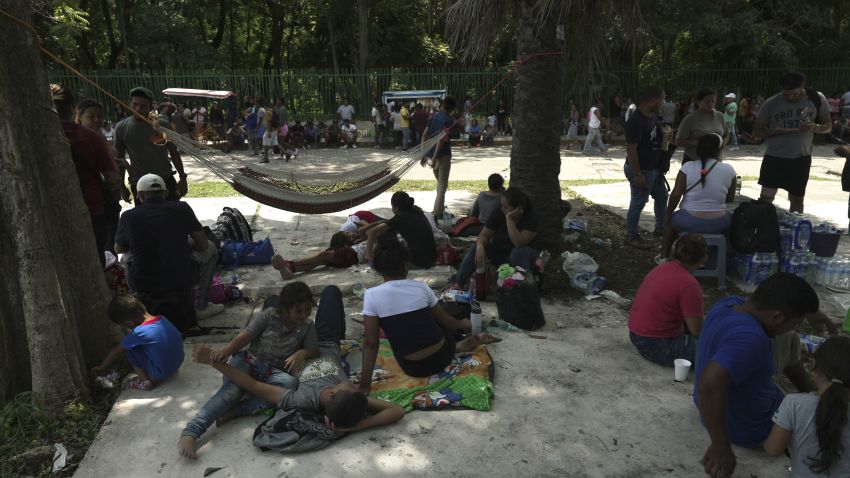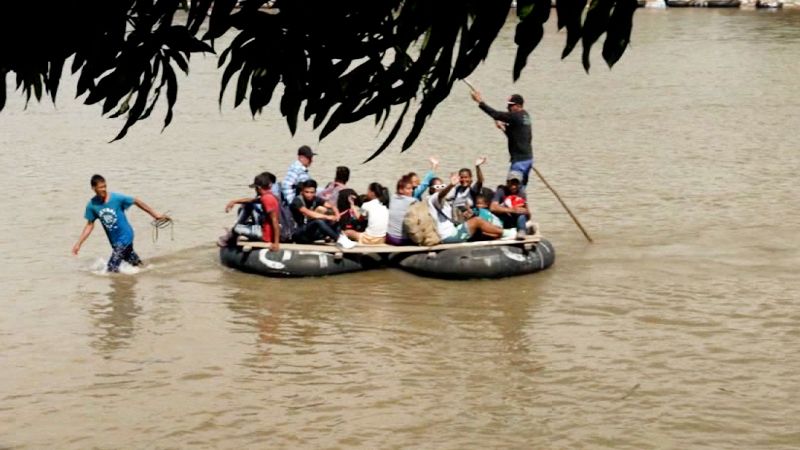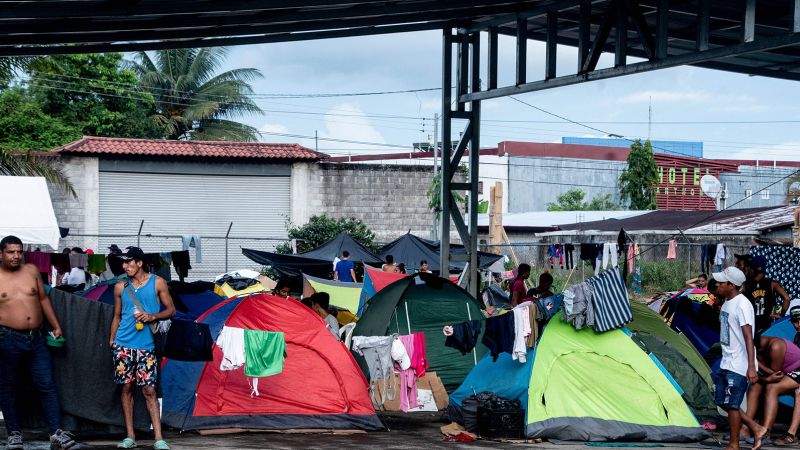Families board makeshift rafts to get closer to the US

Ciudad Hidalgo, Mexico
CNN
—
There’s a bustling trade in people and goods across the Guatemala-Mexico river border this week. But almost the entire flow of people skirts the route across the road bridge and tries to avoid official eyes by floating across the water.
Makeshift rafts of wood and truck inner tubes carry families across the Suchiate River – most of them getting set to cross yet another country as they aim for the United States and hopes of a better life.
They are part of a continuing surge of travelers impacting towns and cities in Mexico, which announced new measures this month, as well as in the US.
Crossings cost about US$1.50 a person, said Javier Guillen, though rates surge to $20 a head for a more dangerous night-time trip. And sometimes the fares must be paid in US currency.
Cash is king on the riverbanks – migrants told CNN that Guatemalan officers would shake them down for bribes if they ran into them, so they tried their best to travel without being seen.

Guillen told CNN he and his wife, Mikeli Marchan, were already down to essentials. He said they had left Venezuela about six weeks ago after they found out they were expecting their first child. He had started off “like a US soldier,” he said, carrying a large backpack with clothes, shoes, and other supplies but it was too heavy for the journey through the muddy, unforgiving and treacherous jungles of the Darién Gap. So, they abandoned anything that didn’t fit with their phones and documents in a small pack strapped around his waist.
Guillen, a trained chef, said he felt “a little calmer” having reached Mexico. Marchan added: “We are almost there, but also scared because they say Mexico is a little dangerous.”
The couple, tired but still hopeful of reaching friends living in Alexandria, Virginia, chatted on the dusty Mexican side of the Suchiate where many migrants have made camp.

‘The journey has been like passing through hell’: Migrants surge into southern Mexico
Laundry washed in the river they had just crossed hangs from string tied between trees, and entrepreneurs arrive to sell food to anyone who still has money.
The people who talked to CNN included a young father who left Cuba to try to secure a better future for his family, the Venezuelan couple preparing for their first child, and mothers corralling their tired children.
While they had used the unofficial inner-tube ferries to reach Mexico, they said they would be heading to government offices soon to seek asylum or permission to transit the country to go on to the US.
The migrants from the riverbank will head to Tapachula – an hour’s drive or a day’s walk from the border. Mexican officials estimate there are already 15,000 to 17,000 migrants in Tapachula, waiting for papers or aid to get back on the road north.
Migrant crossings along the US-Mexico border are rising, surpassing 8,600 over a 24-hour period last week, according to a Department of Homeland Security official. That’s up from around 3,500 daily border arrests after the expiration of Title 42 in May triggered new consequences for those who cross the border illegally.
Mexico said about 77,000 migrants applied for asylum there last year and the number could double this year.
The scene at the river supports that expectation. Even as few vehicles used the Rodolfo Robles bridge, the ferrymen went back and forth, back and forth, each time bringing more and more people to Mexico.







